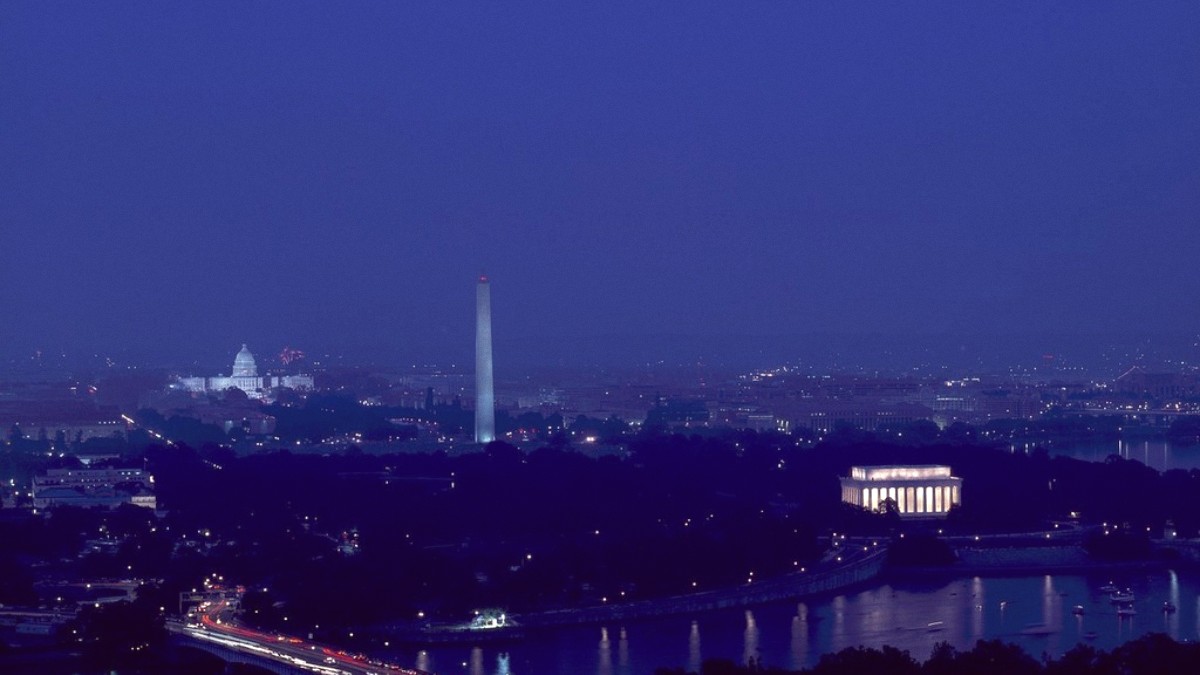
Washington Dc, USA
Georgetown boasts a collection of must-visit sites, each with its own historical and cultural significance, allowing for a comprehensive view of the area's heritage.
From academic institutions to historic waterways and grand estates, these landmarks paint a picture of Georgetown's enduring past.
Early mornings on weekdays are optimal for quiet strolls on residential streets and the C&O Canal Towpath, avoiding crowds.
Several private art galleries, mainly along Wisconsin Avenue NW, display contemporary, fine art, and photography.
(1073 Wisconsin Ave NW) An iconic, historic jazz club offering live performances in an intimate setting.
(3210 Grace St NW) Occasionally hosts local art shows or small performances.
Major theaters like the Kennedy Center are easily accessible from Georgetown for broader performances.
Beyond these, Georgetown University often hosts public lectures and cultural events.
Georgetown is a living historical district, with many sites reflecting its deep past.
Georgetown is a historically preserved district known for its Federal and Victorian-era architecture. Walking its streets presents a rich historical experience.
Holy Trinity Catholic Church (1787) is one of D.C.'s oldest Catholic congregations. Christ Church, Georgetown, is a historic Episcopal church with beautiful stained glass.
The C&O Canal represents significant industrial heritage, reflecting the importance of canal transport in the 19th century. Its locks and towpath illustrate early American engineering.
No specific memorial sites unique to Georgetown exist, beyond the general historical significance of the entire district. The C&O Canal serves as a memorial to 19th-century industrial ambition.
No archaeological sites or ruins are in Georgetown. Its history mainly exists through preserved structures.
Every block in Georgetown presents period details and architectural styles, making it a district where history is readily apparent.
Georgetown is a recognized historically preserved district, famed for its Federal and Victorian-era architecture.
Holy Trinity Catholic Church and Christ Church offer glimpses into the area's spiritual past and architectural beauty.
The C&O Canal embodies significant industrial heritage, showing 19th-century engineering and commerce.
Georgetown's historical significance extends beyond its individual landmarks; the entire district acts as a historical narrative.
Beyond its urban charm, Georgetown provides access to beautiful natural spaces, notably along its waterfront and northern edges.
These areas present quiet retreats and scenic views, a welcome contrast to the bustling commercial streets.
Georgetown is home to meticulously maintained gardens and public parks.
Find stunning vistas and recreational opportunities on the Potomac River.
Despite being an urban area, Georgetown's green spaces present modest wildlife viewing.
Georgetown's geological landscape is defined by its Potomac River frontage.
Venture beyond the main streets to discover Georgetown's lesser-known treasures, offering unique experiences and quiet retreats.
Discover serene spots like Book Hill Park for a peaceful moment away from the crowds.
Explore hidden passages with historic details and unexpected views.
Access The Wharf in D.C. Via water taxi for diverse dining and entertainment.
A smaller parallel street with unique shops and cafes, offering a quieter alternative to M Street.
Look for colorful doors and intricate architectural features on residential streets, perfect for photography.
While the house itself is iconic, the small park and immediate surroundings offer quaint historic views often overlooked.
Beyond the main campus buildings, smaller garden areas offer quiet reflection spots.
The historic locks themselves are engineering marvels and provide interesting photo subjects, especially during operation.
Many locals appreciate spots away from the main tourist paths.
Newer areas of D.C. Offer different experiences, easily accessible from Georgetown.
The elevated areas around Dumbarton Oaks or the C&O Canal locks sometimes present unique perspectives of the neighborhood.
These spots often have fewer people, making for more personal observation.
Georgetown presents access to beautiful natural spaces, especially along its waterfront and northern edges.
Internationally renowned, 10-acre formal gardens offer meticulously sculpted landscapes and seasonal blooms.
A linear park along the Potomac River, ideal for walking paths, fountains, and scenic river views.
Panoramic views of the Potomac River, the Rosslyn skyline, and the Georgetown waterfront from the bridge.
A public park adjacent to Dumbarton Oaks, featuring open spaces, walking trails, and a children's playground.
Accessible from parts of Georgetown, this large urban park offers miles of paved and unpaved trails for diverse nature walks.
Starts at 1057 Thomas Jefferson St NW, this flat, gravel path provides scenic walks, bike rides, and insights into 19th-century transportation.
Towpath detailsThe Potomac River borders Georgetown, offering recreational activities like kayaking and paddleboarding with rentals available at Thompson Boat Center.
While urban, the C&O Canal and adjacent wooded areas host various bird species, squirrels, and occasionally other small urban wildlife.
The Potomac River along Georgetown offers prime opportunities for water-based activities and scenic views.
Extensive trail systems connect Georgetown to broader D.C. Natural spaces.
Wear comfortable shoes for walking on the C&O Canal Towpath or through Rock Creek Park. Bring water, especially during warmer months.
Consider sun protection if spending extended time along the waterfront or trails.
Georgetown's appeal extends beyond its main attractions, with several hidden facets waiting to be discovered by visitors.
Wander into Georgetown's lesser-known alleyways for unique discoveries.
Experience Georgetown like a local by seeking out cherished spots.
The Wharf is a newer waterfront development in D.C., a remarkable area of expansion.
Consider a boat ride from Georgetown's waterfront to experience The Wharf.
Some elevated areas and less-trafficked paths offer fresh perspectives.
These spots often present a quieter setting for reflection and photography.
Capture Georgetown's unique charm with these distinct photo subjects.
Look for contrasting light, especially in early morning or late afternoon, for best results.
Georgetown's charm extends to its quieter side streets and historic alleyways, often overlooked by first-time visitors.
Seek out local-favored spots, including independent shops and cafes, for an authentic neighborhood feel.
Consider the water taxi to The Wharf for a different D.C. Experience with dining and entertainment.